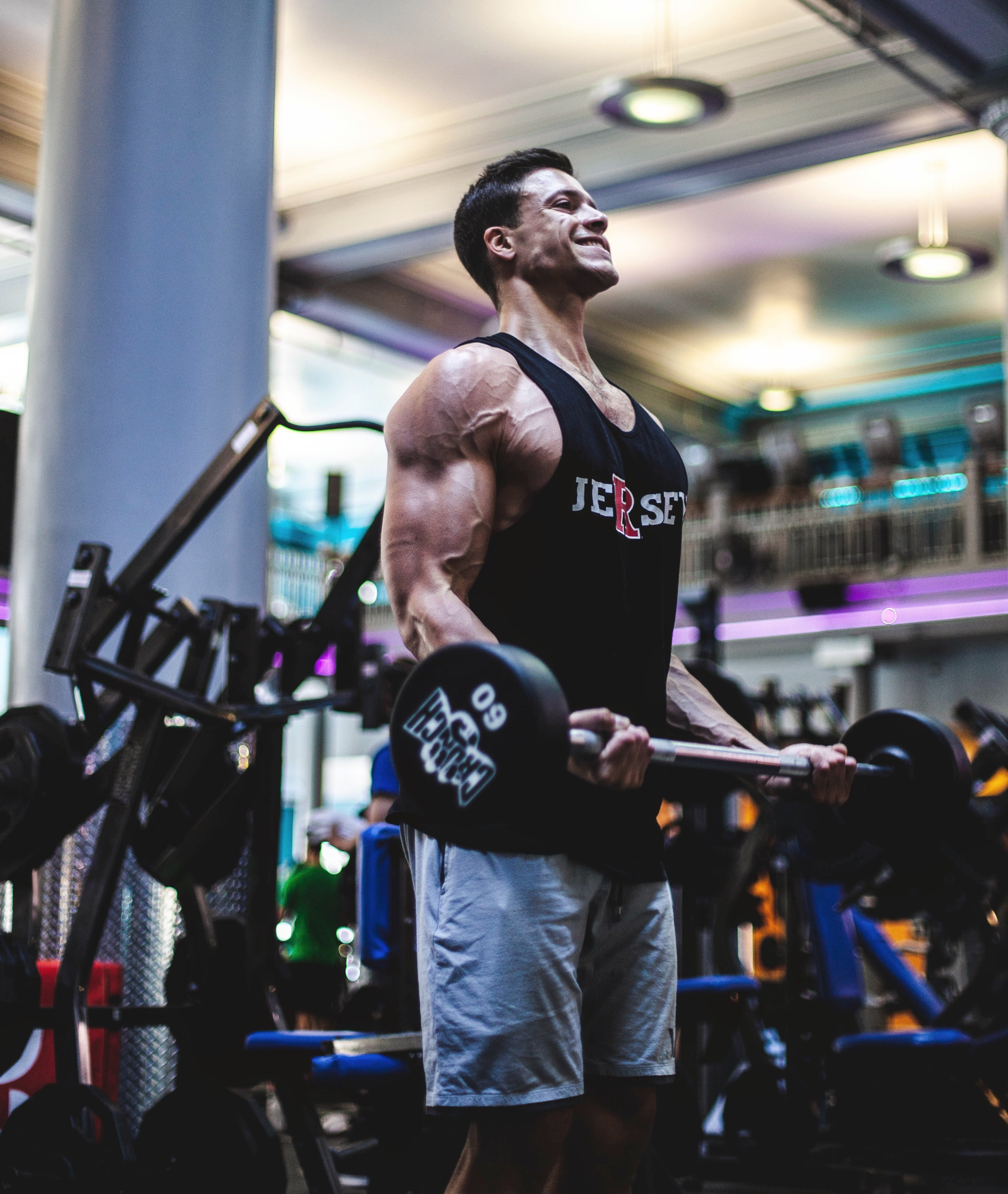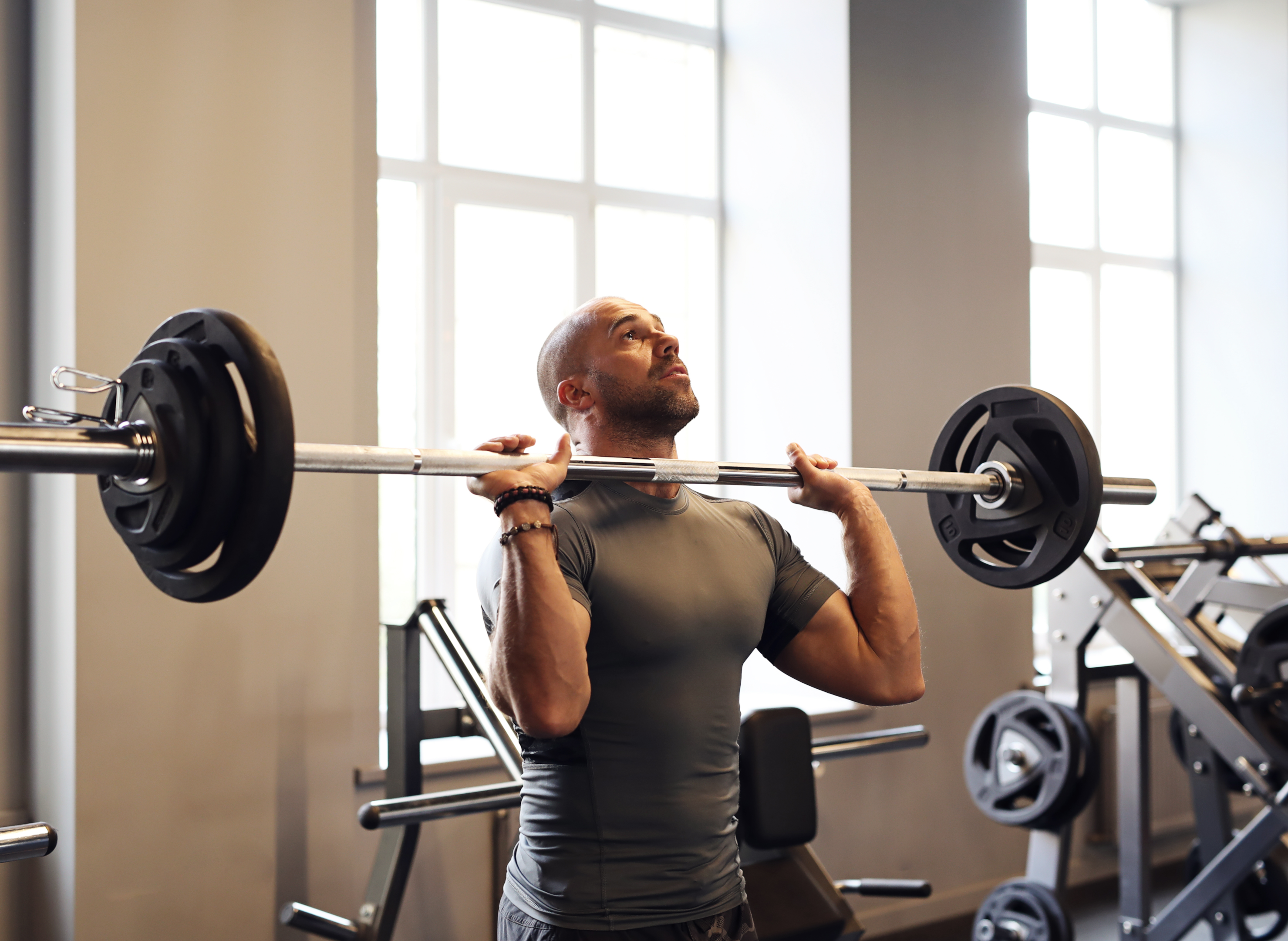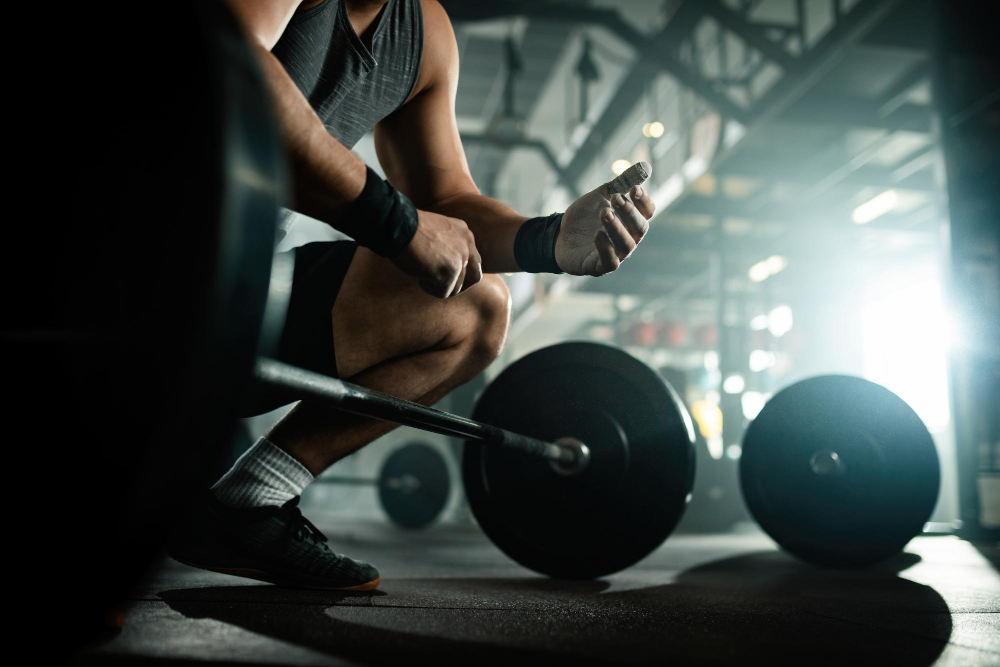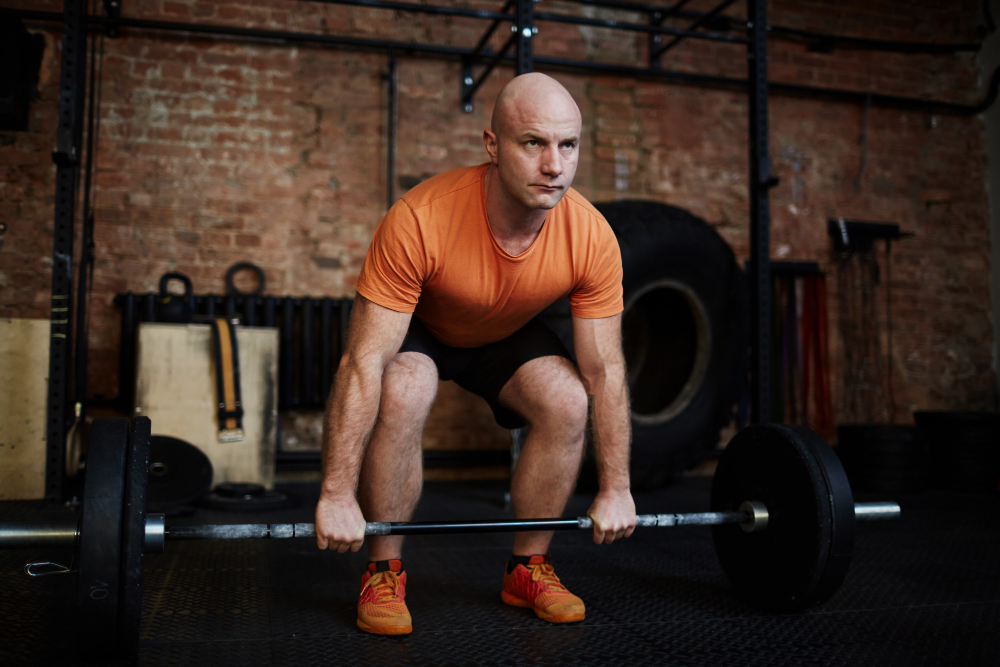Everything You Need to Know About Deadlifting?


Deadlifting is one of the most famous weightlifting exercises, and if you’re here reading this article, then you’ve surely decided to understand and learn proper technique—an essential step to avoiding common deadlift mistakes and lifting safely. Whether you're training for overall strength, sports performance, or general fitness, mastering the deadlift can enhance power, stability, and endurance.
In this article, you will learn everything you need to know about deadlifting, covering the definition of a deadlift, the muscles it targets, useful deadlift variations, and—possibly the most crucial information—how to adopt the appropriate deadlift position while avoiding common deadlift faults. Additionally, incorporating sports supplements such as protein powders, BCAAs, and pre-workouts can support muscle recovery and strength gains, helping you perform at your best.
You will also discover different ways to perform this lower-body workout so that you don’t feel limited to a single variation! If you want to unlock the full benefits of deadlifting—including its role in improving athletic performance—continue reading for a thorough guide.

Image credit: Total Shape
The deadlift is a compound weightlifting workout that targets both the upper and lower body. Compound exercises engage multiple large muscle groups and span several joints, including the hamstrings, core, glutes, back, and trapezius muscles. The deadlift efficiently strengthens these muscles in a short period, making it a staple in strength-building programs. If you're looking to progressively increase your strength, starting with moderate weights like the 8kg Cast Iron Kettlebell can help build foundational stability before moving on to heavier lifts.
You’ve likely seen this exercise in almost every strength-training routine, as it mimics a fundamental movement pattern—lifting heavy dead weights from the ground. Even bending down to pick up an object follows the same biomechanics, often referred to as a “hip hinge.” To master the deadlift, it's crucial to start with proper form and controlled movements. As you progress, incorporating a structured setup, such as training within a Power Rack, provides added support and safety, especially when lifting heavier weights.
Once you have perfected the correct deadlift stance, you can begin using heavier equipment to challenge your strength. Barbells are the most common choice for deadlifting, and upgrading to a 45kg Straight Urethane Barbell allows for a more intense workout that effectively engages multiple muscle groups. Using accessories like a weightlifting belt, lifting straps, and wrist straps can also help maintain proper technique and reduce the risk of injury.
Deadlifts are a strong and effective exercise to include in everyday life since they work for so many different muscle groups.
One of the most tremendous benefits of deadlifts is that they not only work on your lower body but also engage your upper body, as it supports the weight while your lower body lifts it. This makes deadlifts a versatile exercise that can be incorporated into almost any fitness program. In general, they activate nearly every muscle group, contributing to enhanced muscle growth and overall strength development. To maximise recovery and muscle gains, supplementing with Dorian Yates Creatine Monohydrate can help improve strength, endurance, and muscle hydration during heavy lifting sessions.
Because deadlifts specifically target the hamstrings and glutes in your posterior chain—the muscles in the rear of your body—they are excellent for lower-body development. When performed correctly, deadlifts also activate the upper back muscles, such as the latissimus dorsi, rhomboids, and trapezius. This is why some people include deadlifts on back-focused workout days, while others incorporate them into lower-body sessions. Additionally, deadlifts engage the rectus abdominis, obliques, and erector spinae, making them a highly effective core-strengthening exercise. For optimal muscle recovery and reduced fatigue, adding Scitec BCAA + Glutamine Xpress to your routine can aid in muscle repair and support endurance during intense deadlift sessions.
The muscles of the shoulder girdle and forearm also play a crucial role in supporting the heavy deadlift load, contributing to improved grip strength and overall lifting. performance.
Of all the other exercises people do, deadlifting benefits a majority of the muscles. It works the glutes, pelvic muscles, hips, lats, arms, shoulders, abs, traps, and more. By doing this exercise you are increasing muscle growth by making more testosterone making the muscle groups strong.
This exercise helps to improve overall body posture including core stability. Doing deadlifts in the correct form will help you to straighten your back and standing position to stand tall and strong. Abdominal muscles, posterior chain, and oblique are also improved by this workout. Additionally, deadlifts are a fantastic way to enhance your bench press.
A deadlift can be effective if you want to achieve that bulk body. It increases the production of growth hormone along with testosterone which increases the muscles of the body giving you a perfect body shape.
This exercise will also increase your cardiovascular health including burning body fats. You can also lift heavy weights, instead of performing a one-rep max deadlift, perform 10 repetitions and 3 sets of a lesser load.
Deadlifts can also increase all other lifting exercises you perform. Since it uses almost all the muscles of your body and gains strength. This strength will help you perform other exercises like pull-ups, shoulder presses, bench presses, squats, and many more.
There are lots of different exercises to build your upper back, but a deadlift is the most effective to build muscle mass in your upper back. It is the best lift for adding mass to your trapezius and middle back.

RFD (Rate of Force Development) is a deadlift that helps to increase this explosive strength. This is the rate at which a muscle may exert its maximum amount of force. Your ability to jump higher, run faster, and perform well in a sport is improved when you have a strong RFD.
When you get older you will find it difficult to bend down and pick up any object. A deadlift will increase the strength of your muscles making them strong enough to not get injured while lifting objects. Back issues can also be treated with this exercise.
Grip deadlifts will increase your grip strength, notably a two-handed overhand grip. It also increases the strength of the forearm. To strengthen your grip and forearms, stop using straps when deadlifting.
So far, we’ve explored deadlifting and its numerous benefits. However, many people make common mistakes while performing deadlifts, often due to improper form and technique. To execute deadlifts safely and effectively, it's essential to understand the correct movements, including variations such as the sumo deadlift and Romanian deadlift.
One of the most accessible versions of the deadlift is the Romanian or stiff-leg deadlift, which focuses on hamstring and glute engagement. Trainees looking to progress from a standard barbell deadlift may attempt the deficit deadlift to enhance their range of motion. On the other hand, the single-leg deadlift is a more advanced movement that demands exceptional balance and coordination. Ensuring proper foot placement and wearing flat shoes can improve stability during these variations. Additionally, maintaining a strong grip and full-body tension is crucial for executing the lift safely. For those looking to enhance their training, investing in gym machines and equipments from Welzo can provide the necessary support for strength-building workouts.
When it comes to grip techniques, there are three main types used in deadlifting. The hook grip is a preferred choice as it provides a secure hold on the bar. However, as grip fatigue sets in, some lifters transition to a mixed grip, which involves using one overhand grip and one underhand grip to prevent the barbell from slipping. For athletes focused on posterior chain development, the snatch grip deadlift is an excellent variation that engages multiple muscle groups. Meanwhile, the double overhand grip remains the most common technique in Olympic deadlifting, promoting overall grip strength and control.
Romanian deadlift or RDS is a great exercise to isolate the hamstrings if you want to build those strong hamstrings.
Standing with your knees slightly bent and your feet hip-distance apart, hold a barbell in front of you.
Hinge at your hips while bending your knees just a little. Push your butt backward by keeping your back flat. The weights should be at your shins and your torso should be almost parallel to the floor.
Push through your heels to stand up straight while maintaining a tight core. As you pull, keep the weights near your shins.
Squeeze your butt when you pause at the top. This is one rep.
Barbell deadlift also targets the hamstrings.
Roll a loaded barbell up against your shins. Grab the bar with an overhand secure grip, just beyond shoulder width, while bending at the hips and knees.
Pull your chest forward and move your hips forward as you stand up with the barbell, keeping your lower back naturally arched.
Keep the bar as close to your body as you can when lifting it. To the floor, lower the bar. It's one rep.

Sumo deadlift targets the posterior chain which includes the hamstrings, glutes, and back. The quadriceps and adductor muscles are also engaged.
With your feet wider than shoulder-width apart, knees slightly bent, and toes pointed out, stand behind your barbell. You can also work your inner thighs with this technique as you turn your feet out further.
Lean forward and encircle the barbell with both hands. You can perform this exercise with a single weight held in both hands or with dumbbells by holding one weight in the centre of each leg.
Push through your heels to stand up straight while maintaining a strong core. As you lift upward, keep the barbell directly beneath your torso.
Squeeze your butt when you pause at the top.
Now, lower your body by hinging at the hips and bending your knees. Keep your back flat while pushing your butt far back. The barbell weights may tap the ground while your torso is practically parallel to the floor, but you shouldn't let the weights rest there. That is one rep.
Conventional Barbell deadlift works on the hamstring muscles. This exercise also requires the back, glutes, hamstrings, arms, and core to be active.
Put the bar over your shoelaces and stand with your feet hip-width apart.
As your torso approaches parallel to the floor, push your hips back and bend forward, reach down and take the bar with a double overhand grip at shoulder width. Take a deep breath in, pull up on the bar tightly just a little, and let your hips drop in a seesaw motion. The term used for this process is 'Pulling the slack out of the bar.'
Set the lats and make sure your armpits are directly over the bar as you lower your hips and draw up on the bar. Focus on removing the floor as you drive through the entire foot. As you stretch your knees and hips, make sure the bar tracks straight.
After locking out your hips, you can reverse the motion by pushing your hips back and hinging forward. After the appropriate number of repetitions, stay tight and lower the bar back to the floor. This is one rep.
The Trap Bar deadlift targets the glutes, hamstrings, quadriceps, erectors, Trapezius, and Back.
Your feet should be aligned with the weight sleeves when you enter the bar.
Kneel. Push the hips further back for a rise that emphasizes the hips. For a deeper squat and a quad-dominant lift, let the knees advance further. Hold the handles firmly in your hands.
Pull your shoulders down and back.
Lift the weight while bracing your core and pushing through your feet.
Hip leaning forward while contracting the glutes Avoid overextending your spine.
This exercise works on the posterior chain.
Stand and keep your hip width apart and feet parallel. Hold two dumbbells, a barbell, or a kettlebell in your hands and place them in front of you.
Leaning forward with your hips, you should place your weight on one leg as your other leg extends straight behind you.
When your body is in the shape of a "T," lift the leg that is extended. Holding on to the weight, your arms need to be hanging straight down. Keep your standing leg slightly bent. Returning to your starting posture, slowly bring your extended leg in. the other leg. This is one rep.

You need to have a good grasp of squats, lunges, and other hip-hinge movements before you switch to deadlifts. Using the lifting belt (weightlifting belt) during your deadlift session will help to preserve the muscles a lot. Having good knowledge is also important to avoid injury risk. Of all the lifts we do, going for a one-rep max in a deadlift or a squat carries the greatest risk of injury.
You can compare your one-rep max lift with that of other lifters who are your body weight using deadlift strength standards. For deadlifts, the bar should only be travelling up; this is the ideal bar path
If you’ve got a history of any back injury, shoulder injury, or hamstring injury, consult your doctor before doing the deadlift. Each workout has a risk along with its benefits, it's recommended to seek help from your physician and do proper warm-ups before your daily workout.
Look through our test kits to help you maximise your sports potential. Or click here to be taken to our Sports Hormone Test.








Plus get the inside scoop on our latest content and updates in our monthly newsletter.